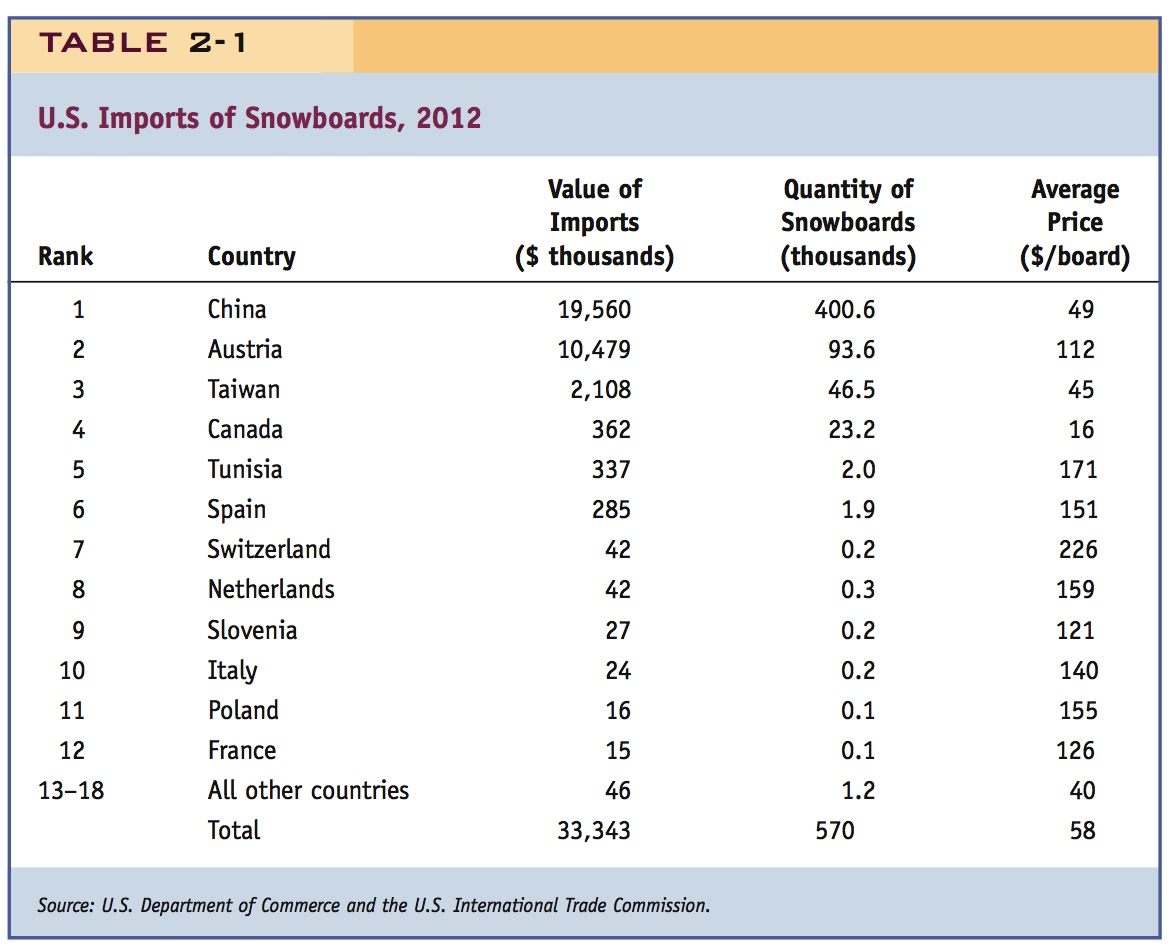Chapter Introduction
27
Trade and Technology: The Ricardian Model
Chapter 2 surveys alternative explanations for why countries trade. It develops the Ricardian model to explain trade based upon productivity differences. The Ricardian model provides three key insights: (1) The pattern of trade can be explained by comparative advantage; (2) trade is mutually advantageous; and (3) wages are determined by absolute advantage.
- Reasons for Trade
- Ricardian Model
- Determining the Pattern of International Trade
- Solving for International Prices
- Conclusions
England exported cloth in exchange for wine, because, by so doing her industry was rendered more productive to her; she had more cloth and wine than if she had manufactured both for herself; and Portugal imported cloth and exported wine, because the industry of Portugal could be more beneficially employed for both countries in producing wine….
It would therefore be advantageous for [Portugal] to export wine in exchange for cloth. This exchange might even take place, notwithstanding that the commodity imported by Portugal could be produced there with less labour than in England.
David Ricardo, On the Principles of Political Economy and Taxation, 1821
Comparative advantage is the best example of an economic principle that is undeniably true yet not obvious to intelligent people.
Paul Samuelson, “The Way of an Economist,” 19691
1. Why do countries trade with each other? Why do we import some goods, but export others?
2. Chapter surveys several answers, but looks in-depth at trade caused by differences in technology (the Ricardian model).
Pick any manufactured product, and you will most likely find that it is traded among a number of countries. Let’s choose snowboards as an example. In 2012 the United States imported (i.e., purchased from other countries) $33.3 million of snowboards from 18 different countries; Table 2-1 identifies the 12 countries with the highest dollar amount of snowboard sales to the United States.
At the top of the list in Table 2-1 is China, exporting (i.e., selling to another country) more than $19 million worth of snowboards to the United States. The second largest exporter to the United States is Austria, selling just over $10 million in 2012. These two countries sell considerably more than the next country on the list, Taiwan (which sold $2 million of snowboards to the United States). The fourth largest exporter in 2012 was Canada, selling $362,000 of snowboards to the United States.

28
Then, a group consisting of mostly European countries—Spain, Switzerland, the Netherlands, Slovenia, Italy, Poland and France, as well as Tunisia, a country on the north coast of Africa that is a former colony of France—sold between $15,000 and $337,000 each to the United States. Another six countries (the Czech Republic, Mexico, Hong Kong, Australia, Germany, and Japan), sold smaller amounts. This rather long list of countries raises a question: With all the manufacturing capability in the United States, why does it purchase snowboards from these countries at all instead of producing them domestically?
The first chapters of this book look at various reasons why countries trade goods with one another. These reasons include:
- Differences in the technology used in each country (i.e., differences in each country’s ability to manufacture products)
- Differences in the total amount of resources (including labor, capital, and land) found in each country
- Differences in the costs of offshoring (i.e., producing the various parts of a good in different countries and then assembling it in a final location)
- The proximity of countries to one another (i.e., how close they are to one another)
In this chapter, we focus on the first of these reasons as an explanation for trade—technology differences across countries. This explanation is often called the Ricardian model because it was proposed by the nineteenth-century economist David Ricardo.
29

This model explains how the level of a country’s technology affects the wages paid to labor, such that countries with better technologies have higher wages. This, in turn, helps to explain how a country’s technology affects its trade pattern, the products that it imports and exports.
1 Samuelson, Paul A. 1969. “The Way of an Economist.” In International Economic Relations: Proceedings of the Third Congress of the International Economic Association, edited by Paul A. Samuelson (London: Macmillan), pp. 1–11.